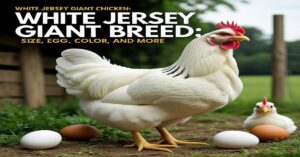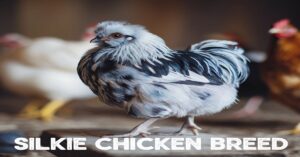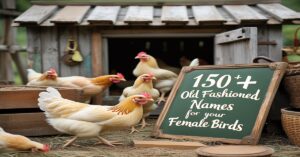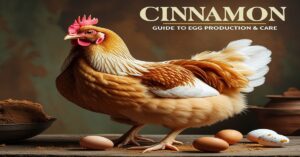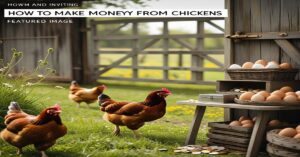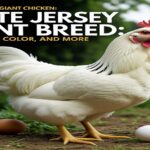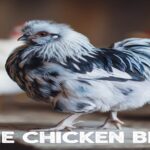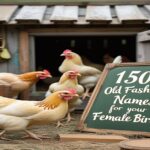Buff Orpington chickens are one of the most beloved breeds in the backyard chicken-keeping community. Known for their gentle temperament, high egg production, and dual-purpose utility (eggs and meat), these chickens offer a variety of benefits for both novice and experienced poultry keepers. In this ultimate guide, we will dive into everything you need to know about the Buff Orpington chicken breed—from its history and appearance to egg production, breeding, and health considerations.
By the end, you’ll have a clear understanding of whether this breed is the right fit for your flock.
Buff Orpington Chicken Facts and Figures Table
| Characteristic | Details |
|---|---|
| Breed Origin | Orpington, Kent, England |
| Developed By | William Cook |
| Breed Type | Heritage Breed |
| Primary Purpose | Dual-purpose (eggs and meat) |
| Weight (Rooster) | ~10 pounds |
| Weight (Hen) | ~8 pounds |
| Egg Production | 200–280 eggs per year |
| Egg Color | Light brown to pinkish |
| Egg Size | Medium to large |
| Lifespan | 7–9 years (with proper care) |
| Temperament | Docile, friendly, and family-friendly |
| Broodiness | Frequently broody; excellent mothers |
| Cold Hardiness | Very cold-hardy due to dense plumage |
| Heat Tolerance | Moderate; requires shade and ventilation in hot climates |
| Coop Space Requirement | 4–5 square feet per bird inside the coop |
| Run Space Requirement | 10 square feet per bird in the run |
| Health Risks | Prone to parasites, obesity, and heat stress |
| Recognition | Accepted into APA’s Standard of Perfection in 1902 |
| Processing Age (Meat) | 5–6 months |
| Plumage Color | Buff (golden-yellow) |
| Notable Features | Fluffy feathers, single comb, clean legs |
Buff Orpington Chicken Breed History
The Buff Orpington chicken has a rich and fascinating history that traces back to the late 19th century in Orpington, Kent, England. Developed by William Cook, a poultry breeder, the Buff Orpington was designed to be a dual-purpose bird—useful both for its eggs and as a source of meat. Cook’s goal was to create a breed that could excel in all aspects of poultry farming, including hardiness, egg production, and meat quality.
Buff Orpingtons were originally bred by crossing several existing breeds, including the Minorca, Black Plymouth Rock, and Columbian Wyandotte. This careful selection created a bird that had all the traits necessary for success in both the egg and meat markets. The breed gained rapid popularity in the UK and soon spread across Europe and the United States. Today, the American Poultry Association (APA) recognizes the Buff Orpington as one of the most reliable and consistent chicken breeds.
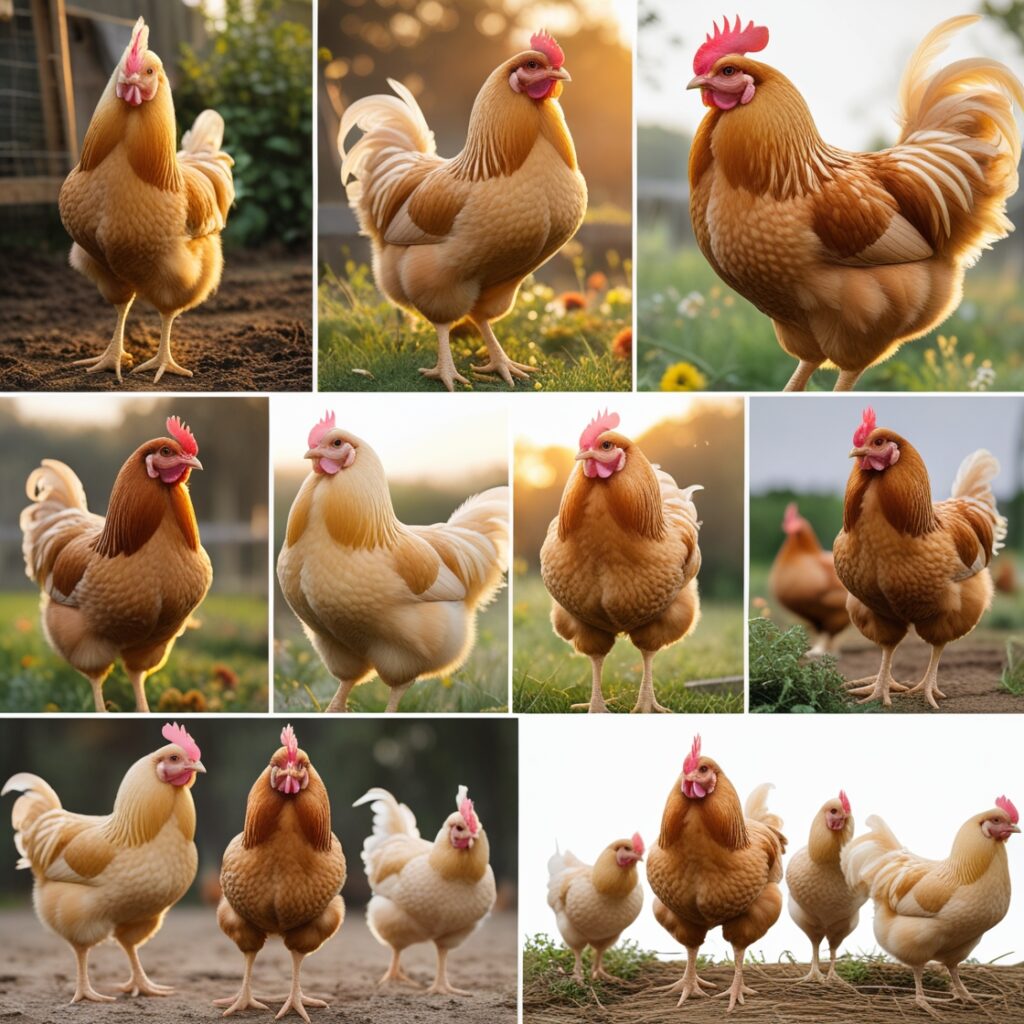
Buff Orpington Breed Classification
The Buff Orpington is classified as a heritage breed, which means it is a traditional breed that has maintained its genetic integrity for generations. It is not a hybrid like some commercial chicken breeds, which are engineered for specific traits (such as fast growth or high egg production). Buff Orpingtons are heritage birds, making them a valuable part of the history of poultry farming.
- Heritage vs. Hybrid: Unlike hybrid breeds that may be more efficient for commercial farming, heritage breeds like the Buff Orpington have retained their natural ability to reproduce and thrive in various environments.
- Buff Orpingtons are officially recognized by the American Poultry Association (APA) and have a standardized appearance and temperament that are consistently passed down.
Physical Characteristics of Buff Orpington Chickens
The Buff Orpington chicken is widely recognized for its distinctive appearance. Here’s a breakdown of what makes this breed stand out:
- Size: Buff Orpingtons are a large breed. Roosters typically weigh about 10 pounds, while hens usually weigh around 8 pounds. Their large size contributes to their ability to be used for meat production.
- Feathering: One of the most striking features of the Buff Orpington is its soft, fluffy feathers. The rich buff color—a golden yellow shade—is a hallmark of the breed and contributes to their friendly appearance.
- Comb Type: Buff Orpingtons have a single comb, a common feature among many chicken breeds. Their wattles and earlobes are usually red, providing a bright contrast against their golden feathers.
- Body Shape: These chickens have a broad, deep body that gives them an imposing presence in the coop. Their short tail and bare legs are also characteristic of the breed.
Physical Features Summary
| Feature | Description |
|---|---|
| Weight | Rooster: 10 lbs, Hen: 8 lbs |
| Feathering | Soft, fluffy, buff-colored plumage |
| Comb | Single comb, red wattles and earlobes |
| Body Shape | Broad, deep body with short tail |
Lifespan and Hardiness
Buff Orpington chickens are not only known for their beautiful appearance, but also for their hardiness. These chickens can live for an average of 8 years with proper care, though some individuals may live longer if given the right conditions.
- Cold Hardy: Buff Orpingtons are cold hardy, meaning they can handle cooler climates better than some other breeds. Their fluffy plumage provides some insulation, but it’s important to provide a draft-free coop in the winter.
- Heat Tolerant: While they can tolerate the cold, Buff Orpingtons are also relatively heat tolerant, making them a versatile breed for both cold and hot climates.
With proper care, such as keeping their living space clean and providing adequate nutrition, Buff Orpingtons can thrive in a variety of environments.

Egg Production
One of the reasons the Buff Orpington is so popular among chicken keepers is its impressive egg production. These chickens are known to lay 200–280 eggs per year, with a consistent egg-laying rate, especially during the warmer months.
- Egg Color: The eggs of Buff Orpingtons are typically brown but can also range from a pale pink to a deeper brown depending on the individual bird.
- Egg Size: Their eggs are generally medium to large in size, making them a great option for people who rely on fresh eggs daily.
Buff Orpingtons are excellent layers, and their consistent egg production makes them an ideal choice for both hobbyists and those looking to provide eggs for their families.
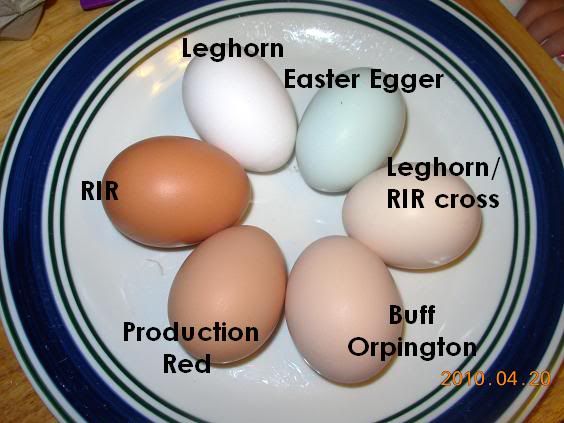
Egg Production Summary
| Egg Characteristics | Details |
|---|---|
| Egg Color | Brown (sometimes pale pink) |
| Egg Size | Medium to large |
| Egg Production | 200–280 eggs per year |
Breeding Buff Orpington Chickens
Breeding Buff Orpingtons is relatively straightforward, especially given their heritage status. These chickens are known for their ability to reproduce naturally, unlike hybrids that often require artificial breeding techniques.
- Broodiness: Buff Orpington hens are known for being broody. They have a strong instinct to incubate and care for their eggs, making them excellent mothers.
- Breeding Tips: To successfully breed Buff Orpingtons, you need to provide a quiet, comfortable nesting area. Since these chickens are broody, you may have to monitor them to ensure they stay on the nest and don’t get too restless.
Meat Production
In addition to being reliable egg layers, Buff Orpingtons are also a great option for meat production. Their large size makes them ideal for processing as roaster chickens, and they are typically ready for meat production at 5 months.
- Meat Quality: The meat from Buff Orpingtons is flavorful and tender, making them a popular choice for those interested in raising their own meat chickens.
- Growth Rate: Buff Orpingtons have a slower growth rate compared to commercial broiler chickens, but their meat quality makes up for it. Their large, meaty bodies are perfect for roasting or stewing.
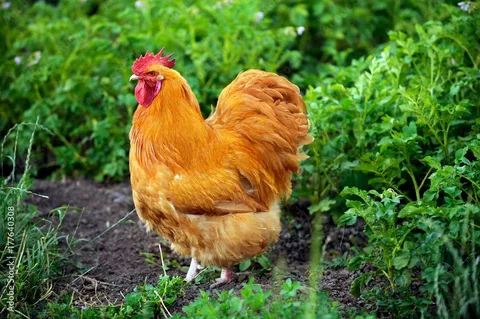
Temperament and Behavior
Buff Orpingtons are famous for their gentle, docile, and friendly temperament. They are often recommended for families with children or beginners who are new to raising chickens.
- Docility: Buff Orpingtons are very easygoing and often enjoy being handled, making them ideal for anyone who wants a calm and friendly bird.
- Compatibility with Other Birds: They tend to get along well with other chicken breeds, though they do enjoy a bit of space and quiet time.
Their gentle nature means they are not likely to become aggressive, even in a mixed flock. This makes them ideal for free-ranging or keeping with other breeds like Black Sex-Links or Silkies.
Housing and Space Requirements
While Buff Orpingtons are fairly low-maintenance, they do need adequate space to thrive.
- Coop Space: Ideally, each Buff Orpington should have at least 4.5 square feet of space inside the coop.
- Run Space: For free-range access, Buff Orpingtons require a minimum of 10 square feet of outdoor run space per bird. This gives them room to forage and move freely while keeping them safe from predators.
It’s also crucial to ensure that the coop is draft-free in winter and has enough ventilation in warmer months.
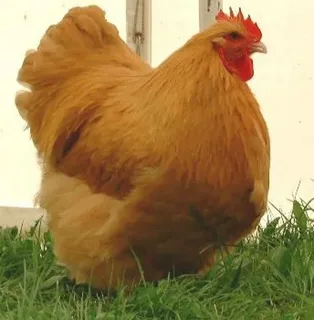
Health Risks and Considerations
Like all chicken breeds, Buff Orpingtons are susceptible to a few health issues. Some common health risks to be aware of include:
- Parasites: Like mites or lice, which can affect any flock.
- Calcium Deficiency: Proper supplementation with calcium is vital, especially for laying hens.
- Heat Stroke: In extreme heat, Buff Orpingtons can suffer from heat stroke. Providing ample shade and access to fresh water is crucial.
By staying vigilant and ensuring proper care, these health issues can often be avoided or managed.
Are Buff Orpington Chickens Right for You?
Buff Orpingtons are a versatile breed, suitable for a variety of poultry keepers. Here’s a checklist to help you decide if they’re the right choice for your flock:
- Egg Production: Yes, if you want a reliable egg layer.
- Meat Production: Yes, if you need a bird for both eggs and meat.
- Temperament: Yes, if you want a friendly, docile chicken.
- Hardiness: Yes, if you live in an area with varying climates (cold or heat).
- Space: Yes, if you have the space for a large bird.
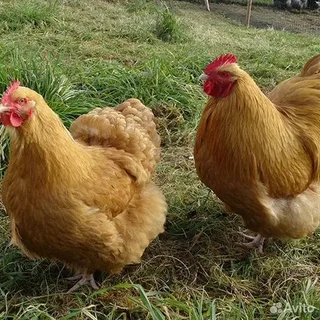
FAQs
What breeds make a Buff Orpington?
Buff Orpingtons were created by crossing Buff Cochins, Dark Dorkings, and Golden Spangled Hamburgs in the 1880s by William Cook.
Are Buff Orpington chickens good egg layers?
Yes, Buff Orpingtons are excellent egg layers, producing large brown eggs, and are hardy enough for various climates.
Is a Buff Orpington a good chicken?
Buff Orpingtons are friendly, docile, and ideal for families, making them a great choice for first-time chicken owners.
Are Buff Orpington aggressive?
No, Buff Orpingtons are known for their calm, non-aggressive nature, making them well-suited for families and quiet flocks.
At what age do Buff Orpingtons lay eggs?
Buff Orpington hens typically start laying eggs around 6 to 8 months of age, depending on their care and health.
Which Orpington is best?
Buff Orpingtons are considered the friendliest variety, known for their calm demeanor, which makes them perfect for families.
How fast do Buff Orpingtons grow?
Buff Orpingtons reach full size in about 5 to 6 months and typically weigh between 7 to 8.5 pounds when mature.
Do Buff Orpingtons do well in heat?
Buff Orpingtons are better suited for cooler climates and may struggle in hot, humid environments due to their cold-weather characteristics.
Can Buff Orpington chickens fly?
Due to their large size, Buff Orpingtons can’t fly well; they might get a few feet off the ground when young, but not as adults.
Are Buff Orpingtons lazy?
Buff Orpingtons are calm and stately but can get energetic when running for treats, showing their playful side.
Why did my Buff Orpingtons stop laying eggs?
A decrease in egg production is often due to shorter daylight hours, which can disrupt their hormonal cycle during winter.
How big are Buff Orpingtons?
Buff Orpington roosters weigh around 10 pounds, and hens average 8 pounds, making them larger than many other breeds.
Why are Buff Orpingtons so popular?
Buff Orpingtons are highly regarded for their large egg production, friendly nature, and ability to lay through the winter.
What age can Buff Orpingtons go outside?
Buff Orpington chicks can be moved outside at 4 to 6 weeks old, once they are fully feathered and the temperature is around 70°F.
Are Buff Orpingtons aggressive?
Buff Orpingtons are not aggressive; they are friendly and enjoy human interaction, making them great for family environments.
What color are Buff Orpingtons eggs?
Buff Orpingtons lay light brown eggs, which sometimes appear with a pinkish or speckled tint.
How fast do Buff Orpingtons grow?
Buff Orpingtons typically reach a market weight of 7-8.5 pounds after 5-6 months, with some enthusiasts praising their meat quality.
What do Buff Orpingtons eat?
Buff Orpingtons have no special dietary needs and can eat the same food as other chicken breeds, starting with 21% Starter Feed as chicks.
At what age do Buff Orpingtons start laying eggs?
Buff Orpingtons generally start laying eggs at around 24 weeks, providing steady egg production.
What is the lifespan of a Buff Orpington?
With proper care, Buff Orpingtons can live between 8 to 12 years, though this may vary based on their health and environment.
Do Buff Orpingtons do well in heat?
Buff Orpingtons are cold-weather birds and may struggle in hot climates, affecting their quality of life in heat and humidity.
Are Buff Orpingtons good moms?
Buff Orpington hens are known for their excellent mothering skills, being very attentive and protective of their chicks.
Are Buff Orpingtons good with kids?
Yes, Buff Orpingtons are gentle and calm, making them excellent companions for children and popular in 4-H projects.
Do Buff Orpingtons lay green eggs?
No, Buff Orpingtons do not lay green eggs; they lay light brown or sometimes speckled eggs.
What are Buff Orpingtons good for?
Buff Orpingtons are versatile, excelling in egg-laying, meat production, and even showing due to their physical traits and temperament.
Why are Buff Orpingtons so popular?
Buff Orpingtons are beloved for their large, consistent egg production, calm nature, and ability to thrive in colder climates.
Conclusion
The Buff Orpington chicken is a fantastic breed for anyone looking for a dual-purpose chicken—providing both delicious eggs and high-quality meat. With their friendly temperament, hardiness, and consistent egg-laying abilities, they’re an excellent choice for families, beginners, or anyone looking to diversify their backyard flock. Whether you’re in a cold climate or a hot one, Buff Orpingtons can thrive with the proper care, making them a reliable and worthwhile addition to any poultry keeper’s collection.
Read more knowledgeable blogs on Flowy Magazine

James Clair is a passionate writer and researcher with a deep fascination for animal behavior and its intricate connection to human life. With a background in [relevant field of study, e.g., zoology, psychology, ethology], James has spent years studying the natural world, focusing on how animals’ actions and instincts impact human emotions, behavior, and society.
His expertise in [specific topics or regions of focus, e.g., canine psychology, animal communication, wildlife conservation] has led to numerous published works and collaborations with renowned researchers and institutions. Through his work at Flawy Magazine, James aims to bridge the gap between scientific research and public understanding, offering insightful, accessible articles that explore the complex relationship between humans and animals.
When he’s not writing, James enjoys [personal hobbies or interests, e.g., hiking in nature, volunteering at animal shelters, photography] and is an advocate for [cause or charity related to animals or conservation]. His mission is to inspire readers to see animals not just as companions or creatures of the wild, but as beings whose behavior holds valuable lessons for us all.


